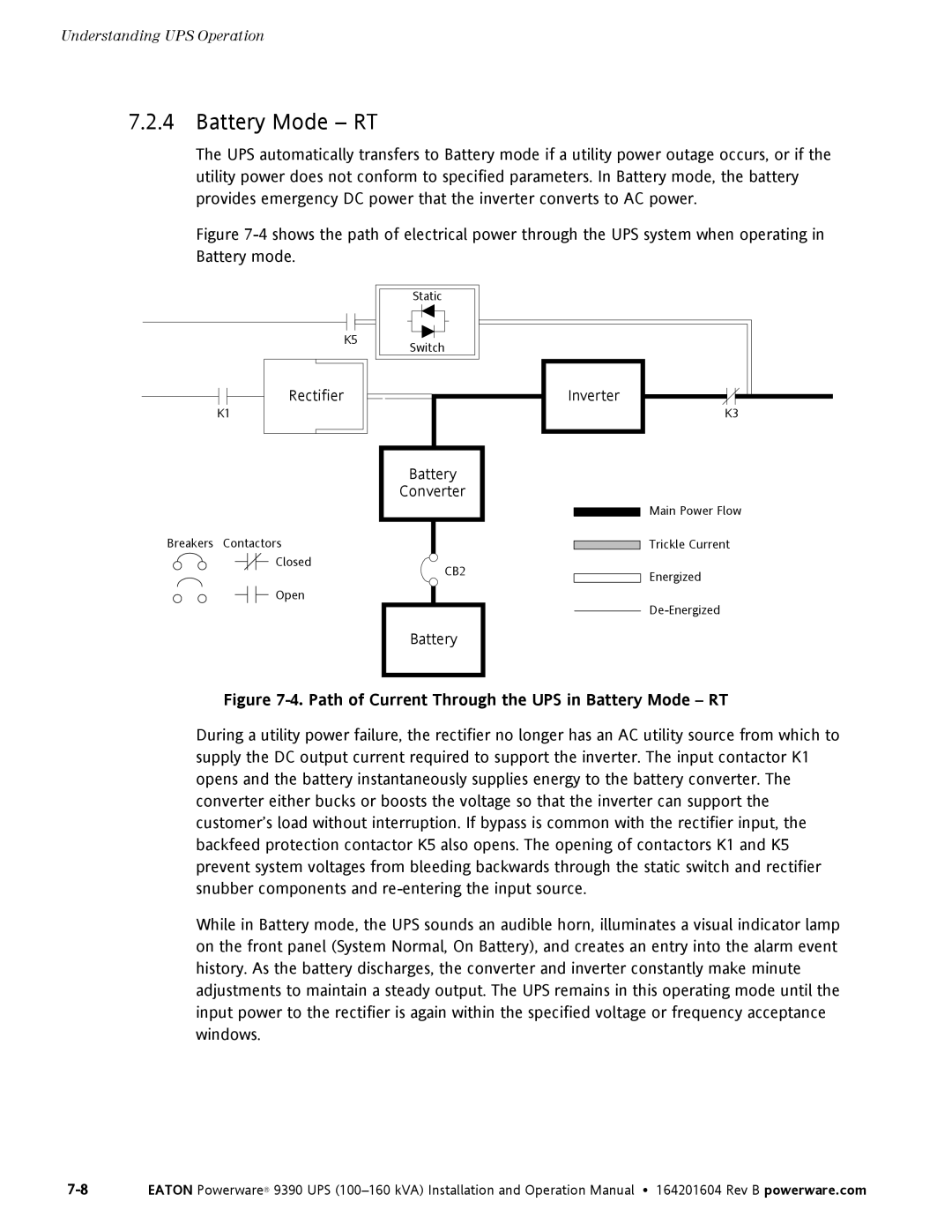
Understanding UPS Operation
7.2.4 Battery Mode – RT
The UPS automatically transfers to Battery mode if a utility power outage occurs, or if the utility power does not conform to specified parameters. In Battery mode, the battery provides emergency DC power that the inverter converts to AC power.
Figure 7-4 shows the path of electrical power through the UPS system when operating in Battery mode.
K5
Static
Switch
Rectifier |
|
K1 |
|
| Battery |
| Converter |
Breakers Contactors |
|
Closed | CB2 |
| |
Open |
|
Battery
Inverter
K3
Main Power Flow
Trickle Current
Energized
Figure 7-4. Path of Current Through the UPS in Battery Mode – RT
During a utility power failure, the rectifier no longer has an AC utility source from which to supply the DC output current required to support the inverter. The input contactor K1 opens and the battery instantaneously supplies energy to the battery converter. The converter either bucks or boosts the voltage so that the inverter can support the customer’s load without interruption. If bypass is common with the rectifier input, the backfeed protection contactor K5 also opens. The opening of contactors K1 and K5 prevent system voltages from bleeding backwards through the static switch and rectifier snubber components and
While in Battery mode, the UPS sounds an audible horn, illuminates a visual indicator lamp on the front panel (System Normal, On Battery), and creates an entry into the alarm event history. As the battery discharges, the converter and inverter constantly make minute adjustments to maintain a steady output. The UPS remains in this operating mode until the input power to the rectifier is again within the specified voltage or frequency acceptance windows.
EATON Powerware® 9390 UPS |
